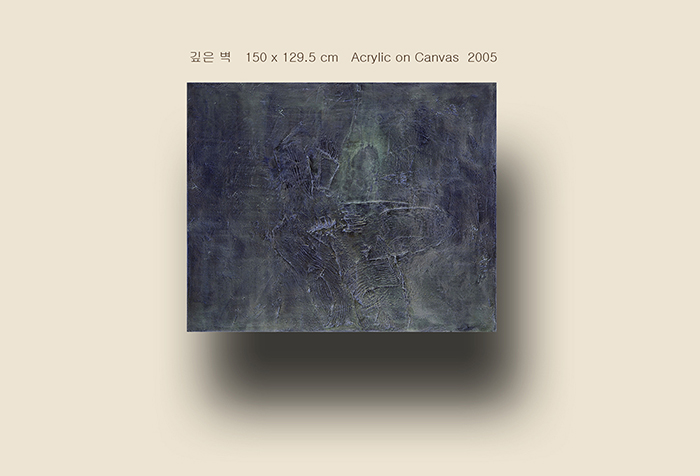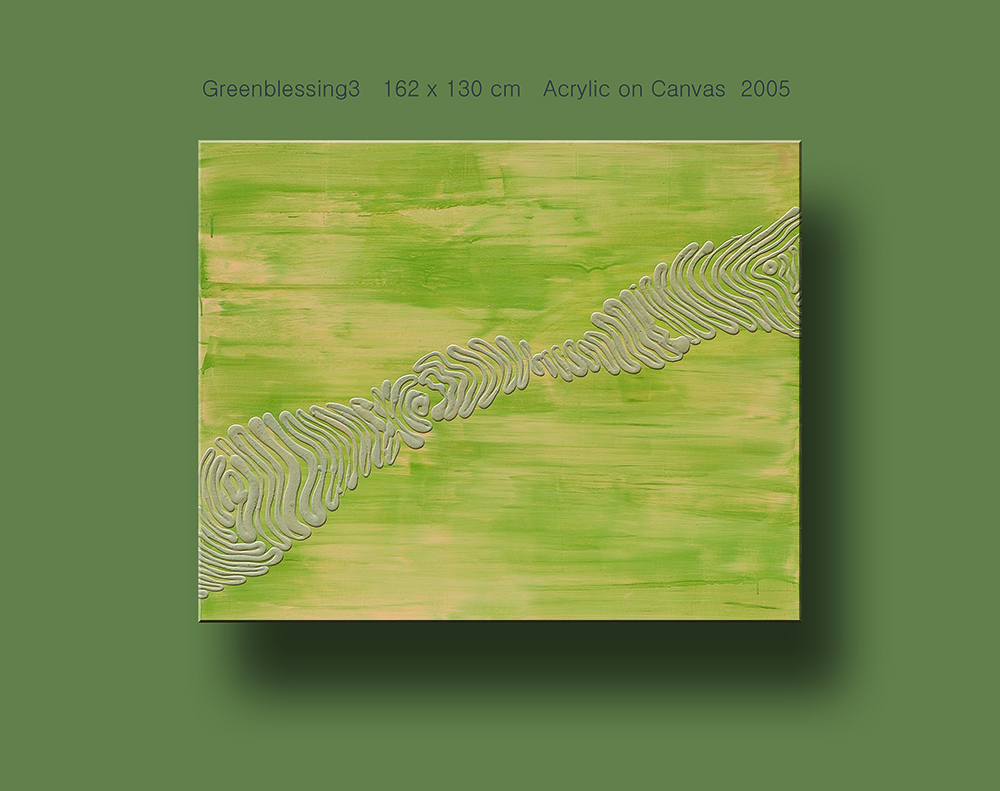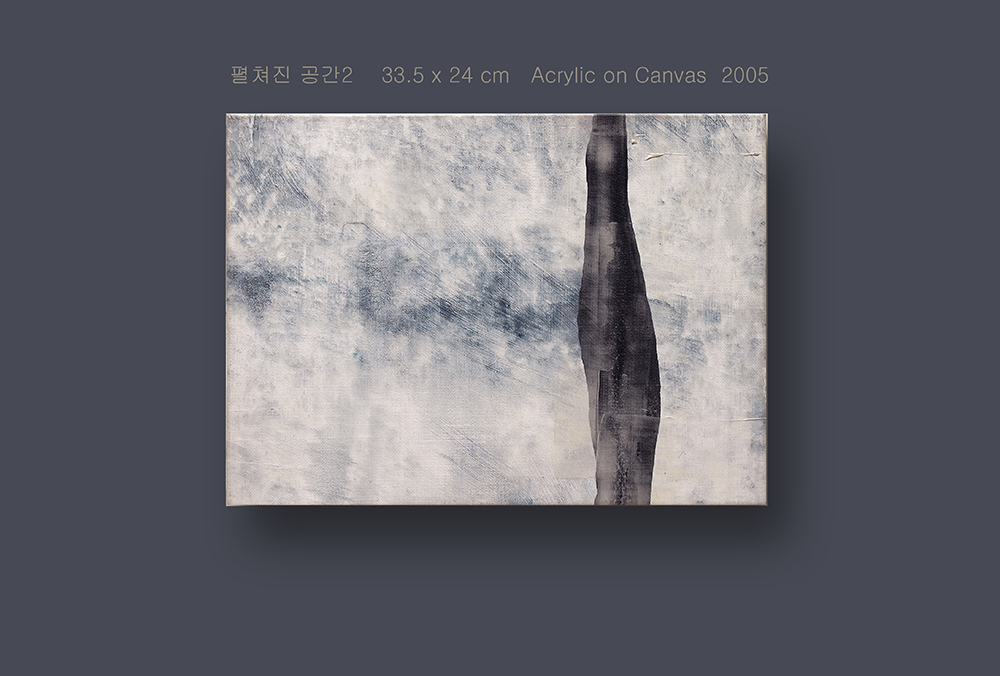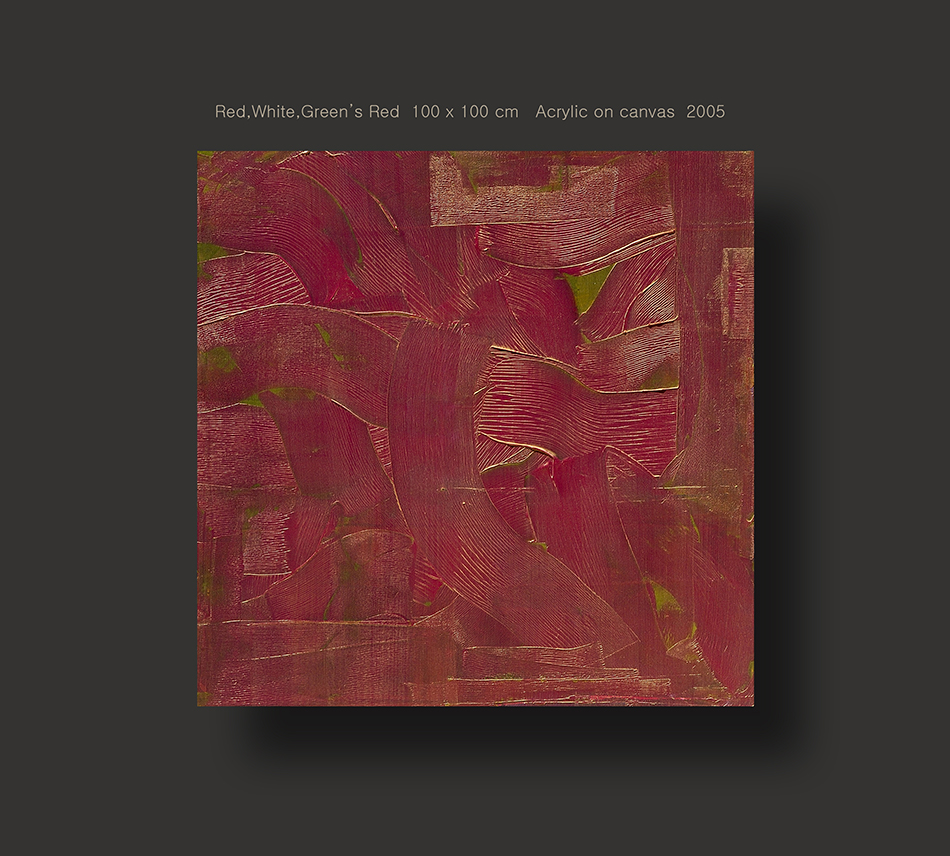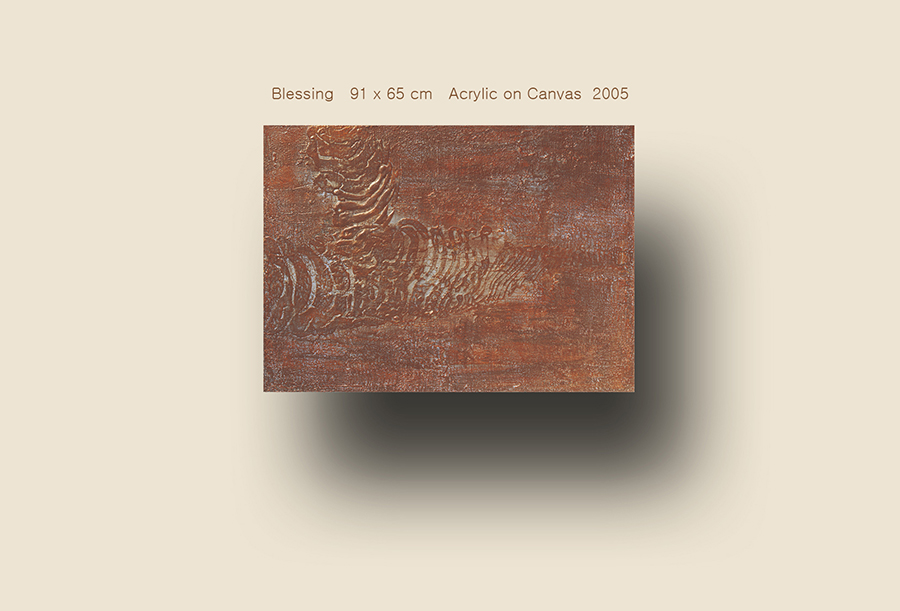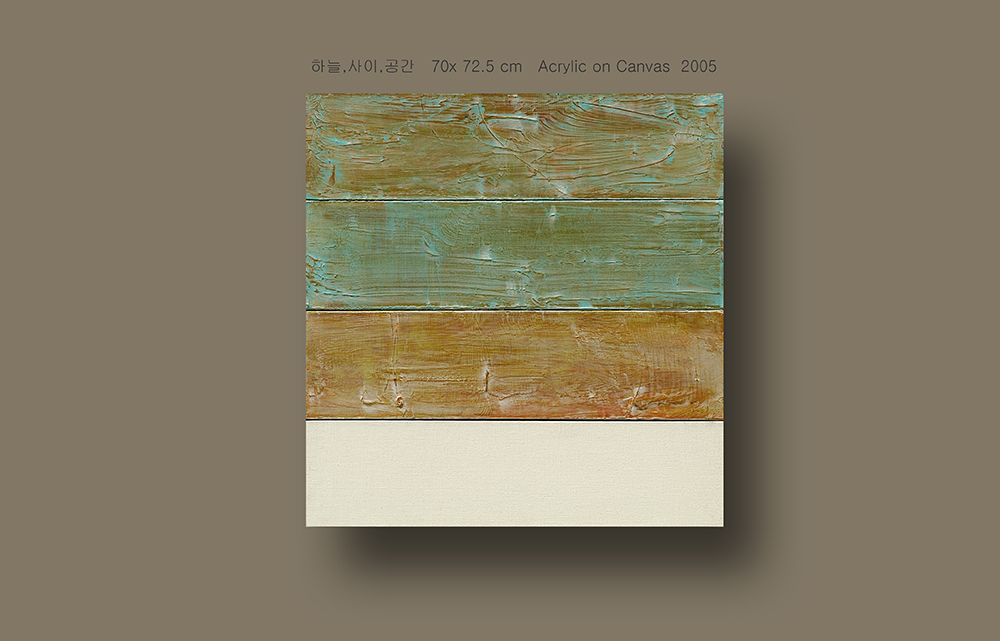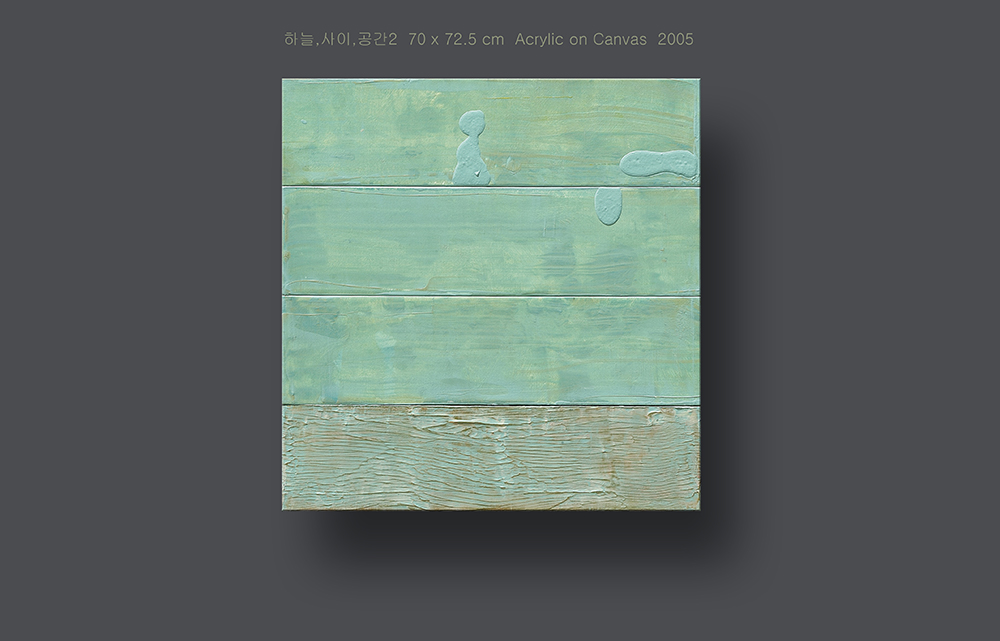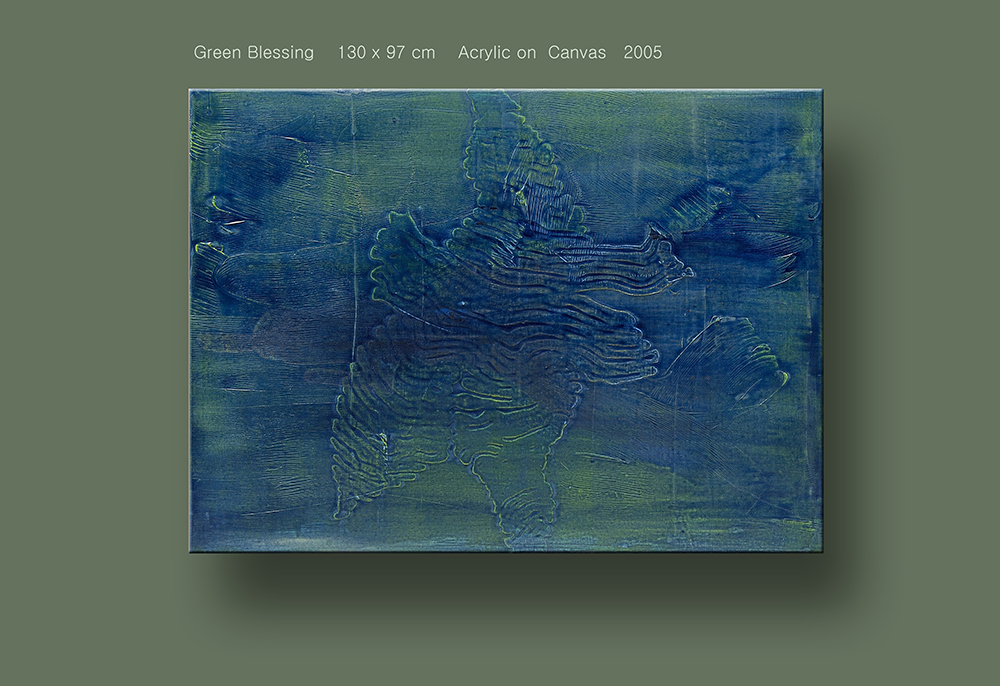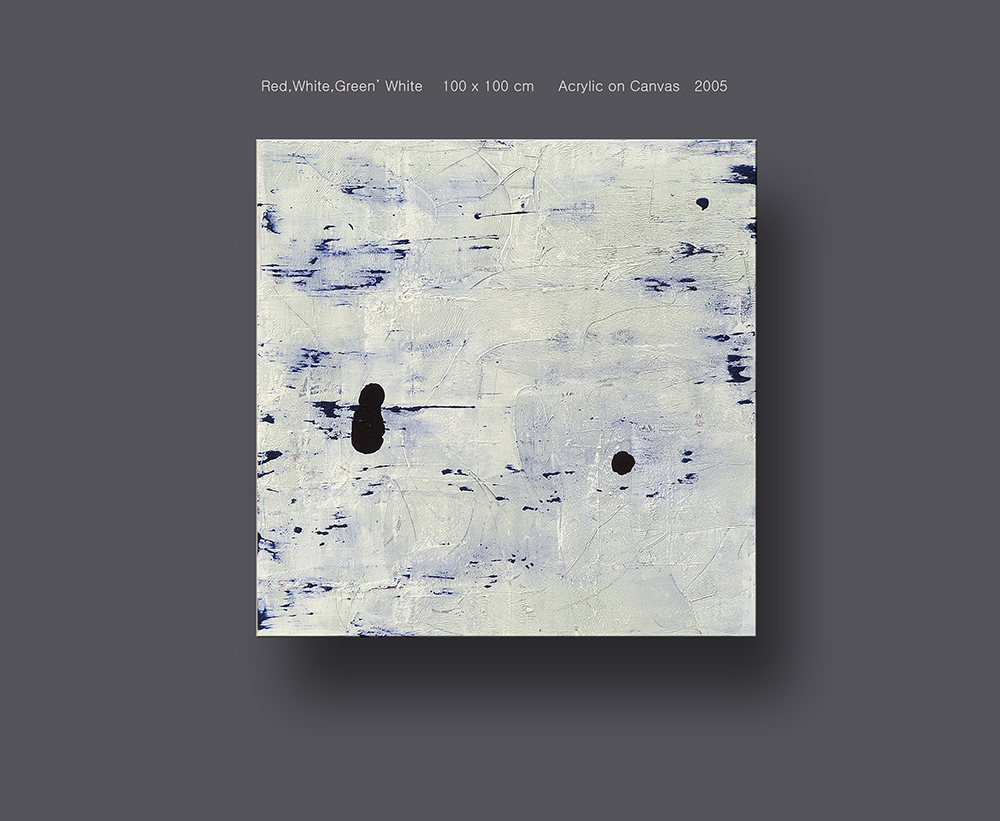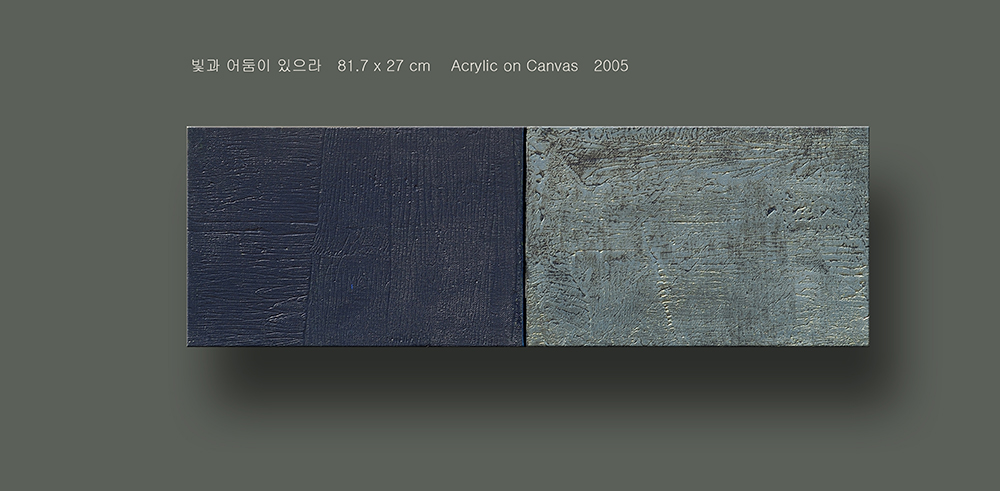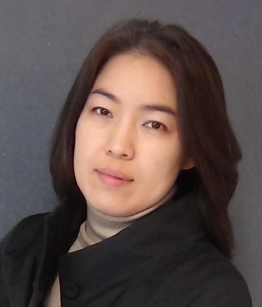
김 주 혜 1969~
BIOGRAPHY
- 1969 서울 출생
- 1993 이화여자대학교 미술대학 대학원 서양화과 졸업
- 1991 이화여자대학교 미술대학 서양화과 졸업
- 1987 선화예술고등학교 졸업
- 前 선화예술학교, 동서울대학교, 이화여자대학교 출강
- 개인전
- 2005 제3회 개인전 ‘ The Space of Blessing' (금호미술관, 서울)
- 2005 제2회 개인전 ‘ 아트 서울’전 (예술의 전당,서울)
- 1993 제1회 개인전 (관훈미술관,서울)
- 수상
- 2006 제5회 'Energy + Energy' 전 창작 지원금 수상 (갤러리 위드 화이트)
- 1994 MBC 미술대전 (예술의 전당)
- 1993 MBC 미술대전 ‘특선’ (예술의 전당)
- 1992 중앙미술대전 (호암 갤러리)
- 1992 대한민국 미술대전 (국립현대미술관)
- 단체전
- 2006 제1회 전국미술대학 초청 온라인 전시회 (한국미술투자 주식회사 주최)
- 2006 제5회 'Energy + Energy' 전 작가 공모전 선정 (갤러리 위드 화이트)
- 2006 '늘푸른 숲'전 (선화예술학교 ,솔거관)
- 2005 지성과 감성전 (세종문화회관 미술관)
- 2002 '늘푸른 숲'전 (선화 예술학교,솔거관)
- 2001 제19회 '채림전' ( 관훈 미술관)
- 2000 신춘 청년작가 21인전 (예일화랑 기획)
- 2000 '늘푸른 숲'전 (선화 예술학교,솔거관)
- 1999 'EWHA-ACTION-VISON' (예술의 전당)
- 1999 제17회 '채림전' ( 관훈 미술관)
- 1998 이서전 (문화예술 진흥원)
- 1997 선화예고 창립20주년 기념전 (공평 아트센터)
- 1997 제15회 '채림전' ( 관훈 미술관)
- 1995 이화여자대학교 미술대학 창립50주년 기념전 (이화여자대학교 미술관)
- 1994 '12인에 의한 90년대의 형상성의 흐름'전 (갤러리 동주 기획)
- 1994 한국미술 2000년대의 주역들 (운현궁 미술관 기획)
- 1993 녹미전 (이화여자대학교 미술관)
- 1993 뉴폼 ‘93전 (윤 갤러리 기획)
- 1993 서울 현대 미술제 (문화예술 진흥원)
- 1992 열림전 (갤러리 예향)
- 1969 born in Seoul
- 1993 M.F.A. in Painting Fine Art, Ewha Womans University
- 1991 B.F.A. in Painting, Ewha Womans University
- 1987 Graduate in Art, Sun-Wha Arts High School
- Past... Lectures of Sunwha Arts School ,DongSeoul college,Ewha Womans University
- Solo Exhibition
- 2005 The 3rd Solo Exhibition, 'The Space of Blessing' Kumho Museum of Art,Seoul
- 2005 The 2nd Solo Exhibition, 'Art Seoul', Seoul Arts Center,Seoul
- 1993 The 1st Solo Exhibition, Kwanhoon gallery,Seoul
- Award
- 2006 The 5th 'Energy + Energy' Exhibition, 'Creative Support' Award , Gallery With White,Seoul
- 1994 MBC Grand Art Exhibition, Seoul Arts Center,Seoul
- 1993 MBC Grand Art Exhibition,'Special Selection', Seoul Arts Center,Seoul
- 1992 Jung Ang Art Grand Exhibition, Hoam Gallery,Seoul
- 1992 Korea Grand National fine Arts Exhibition, National Museum of Modern Arts,Gwacheon
- Group Exhibition
- 2006 The 1st The Nation Arts University invitation on line Exhibition, Korea Arts By Investment Corporation
- 2006 The 5th 'Energy + Energy' Exhibition, 'Creative Support' Award , Gallery With White,Seoul
- 2006 Exhibition of Evergreen Forest, gallery Solger of Sunwha Arts School,Seoul
- 2005 Exhibition of Intelligence and Sensitivity, Sejong Center for the Performing Art Museum,Seoul
- 2002 Exhibition of Evergreen Forest, gallery Solger of Sunwha Arts School,Seoul
- 2001 The 19th Exhibition of 'Chae Lim' , Kwanhoon Gallery,Seoul
- 2000 Exhibition of By 21 Young Artists, Yale gallery,Seoul
- 2000 Exhibition of Evergreen Forest, gallery Solger of Sunwha Arts School,Seoul
- 1999 'Ewha-Action-Vision', Seoul Arts Center,Seoul
- 1999 The 17th Exhibition of 'Chae Lim' , Kwanhoon gallery,Seoul
- 1998 Exhibition of ' Ewha Womans University Alumni, The Korean Culture and Arts Foundation, Seoul
- 1997 Exhibition of 'the 20th Anniversary of the Founding of Sunwha Arts High School' ,Gong Pyung Art Center,Seoul
- 1997 The 15th Exhibition of 'Chae Lim' , Kwanhoon gallery,Seoul
- 1995 Exhibition of 'the 50th Anniversary of the Founding of Fine Art school of Ewha Womans University' , Museum of Ewha Womans University,Seoul
- 1994 'Leaders of 2000s in Korea Contemporary of Art, Museum of Unhyeon Palace,Seoul
- 1994 'Main Stream of image in 1990s by 12 artists, Gallery Dong-Joo,Seoul
- 1993 Seoul Contemporary Art Festival , The Korean Culture and Arts Foundation, Seoul
- 1993 Exhibition of New Form 93 , Gallery Yoon,Seoul
- 1993 Exhibition of Green Arts , Museum of Ewha Womans University,Seoul
- 1992 Exhibition of Yellim, gallery Yehyang,Seoul



